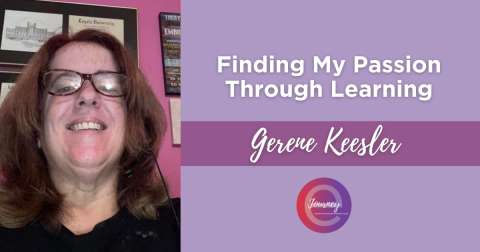Finding My Passion Through Learning

By Gerene Keesler , Florida
Person with EpilepsyGrowing up, and throughout my teenage years, I always knew I was different. My family couldn't accept that I was different medically or had epilepsy. I heard my parents "couldn't handle it," even though I tried to express to my now late father that "handling it" was their job as my parents. I didn't understand why I studied as long as the A students, my closest friends, yet I constantly received a grade of C or lower, especially if the subject was math or science.
I failed geometry for four quarters and summer school. My driver's ed grade was put in its place so I could graduate with my peers. I felt that the air of denial was permeating and nothing was wrong. Studying harder was always the answer, but that didn't work. I felt even worse because I knew something was wrong but didn't know exactly what.
Once I graduated high school, an admissions counselor fought for me to attend college. I was admitted to Loyola University, New Orleans, my alma mater. Once there, I made regular trips to the Academic Success Center to start testing to see why I was less successful than my peers. The first diagnosis was NLD (non-verbal learning disorder). Those closest to me would see the irony in that finding. I began regular and consistent tutoring and turned around a 1.1 starting GPA to graduate with a master's degree in counseling with a 3.5 GPA.
During this time, seizures returned after lying dormant for 13 years. I fell to the floor in the Office of Admissions, where I had one of my three on-campus jobs. I immediately knew I was having auras, which led to eight back-to-back seizures. I've been on various seizure medications since 1991, finding out I should never have been taken off of them in the first place.
In addition to epilepsy, I found out I had four brain injuries. I was born with no left brain, no corpus callosum, and an orange-sized cyst on my skull. I was also on the autism spectrum. That's a lot to learn when you wake up in the hospital after flatlining twice. Things began to stabilize once I got back on a consistent dose of seizure medications. It was hard at first to figure out which meds were okay for me and which were not. I did almost everything my peers did, just not as quickly or as well if it involved balance, coordination, or motor control. I gave up driving last year and wish I would have done so sooner. Removing driving from the equation has made me a better employee and a less anxious person overall.
I also realized that starting occupational and physical therapy at four and not 34 would have been easier. That was an eye-opener and something I can't make up lost ground for. With no left brain, there's no muscle tone at all on my right side. Going down escalators and stairs without railings and picking up anything with my right hand are mostly impossible.
For the most part, I've found my passion in college admissions. There have been some bumps along the way, but working with students, especially with challenges like mine, is rewarding. There are so many more resources for them than there were for me.
I'm sharing my story to help change the thinking that people like me are lazy or don't want to learn. Instead, learning keeps us going, so I want to work with people with learning disabilities. Students with challenges often gravitate toward me. We have a lot in common: we are battle-scarred, exhausted, and have neuro fatigue that can't be explained to someone who hasn't experienced it. Yet, we continue on each day as survivors.
Reviewed By: Sara Wyen
